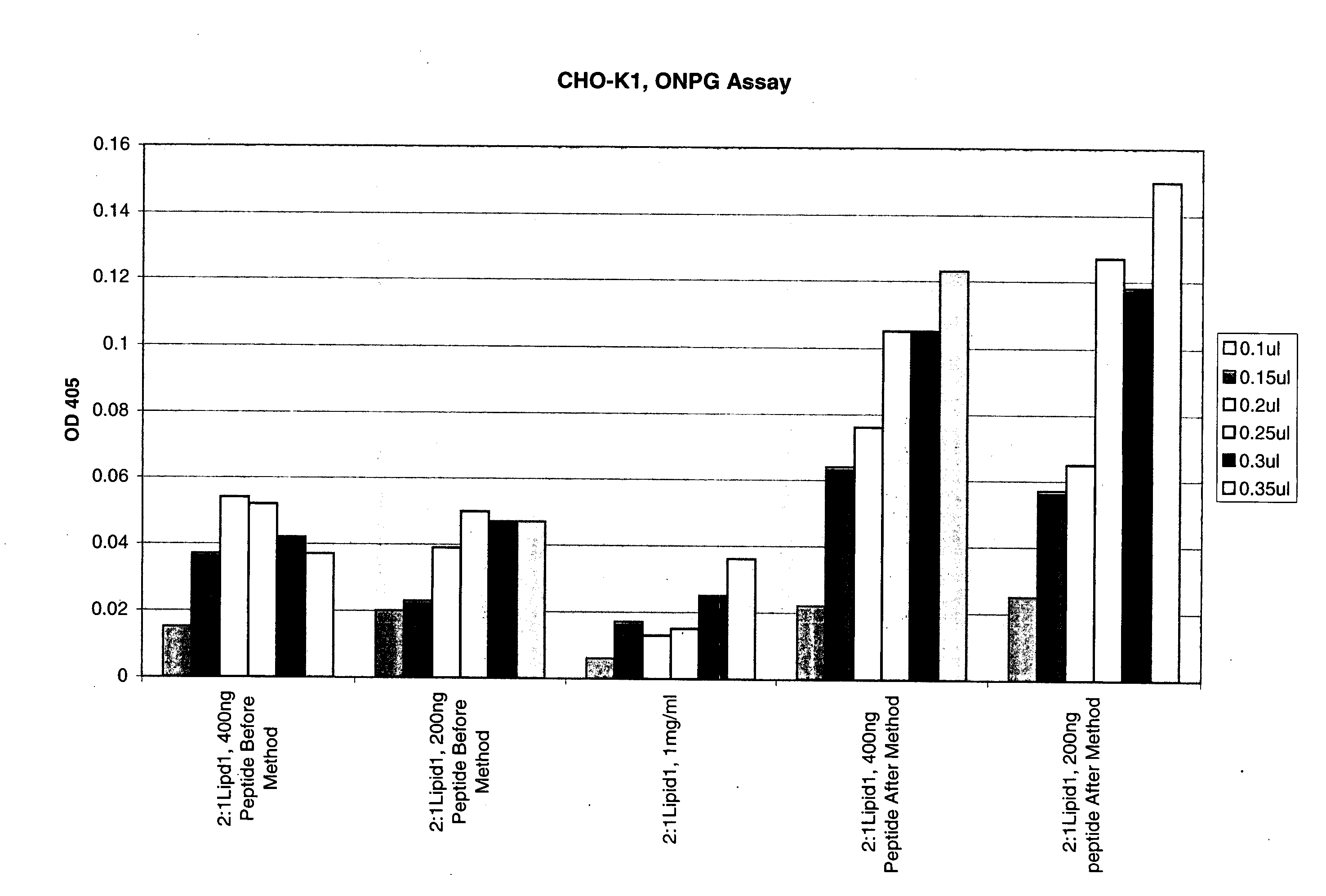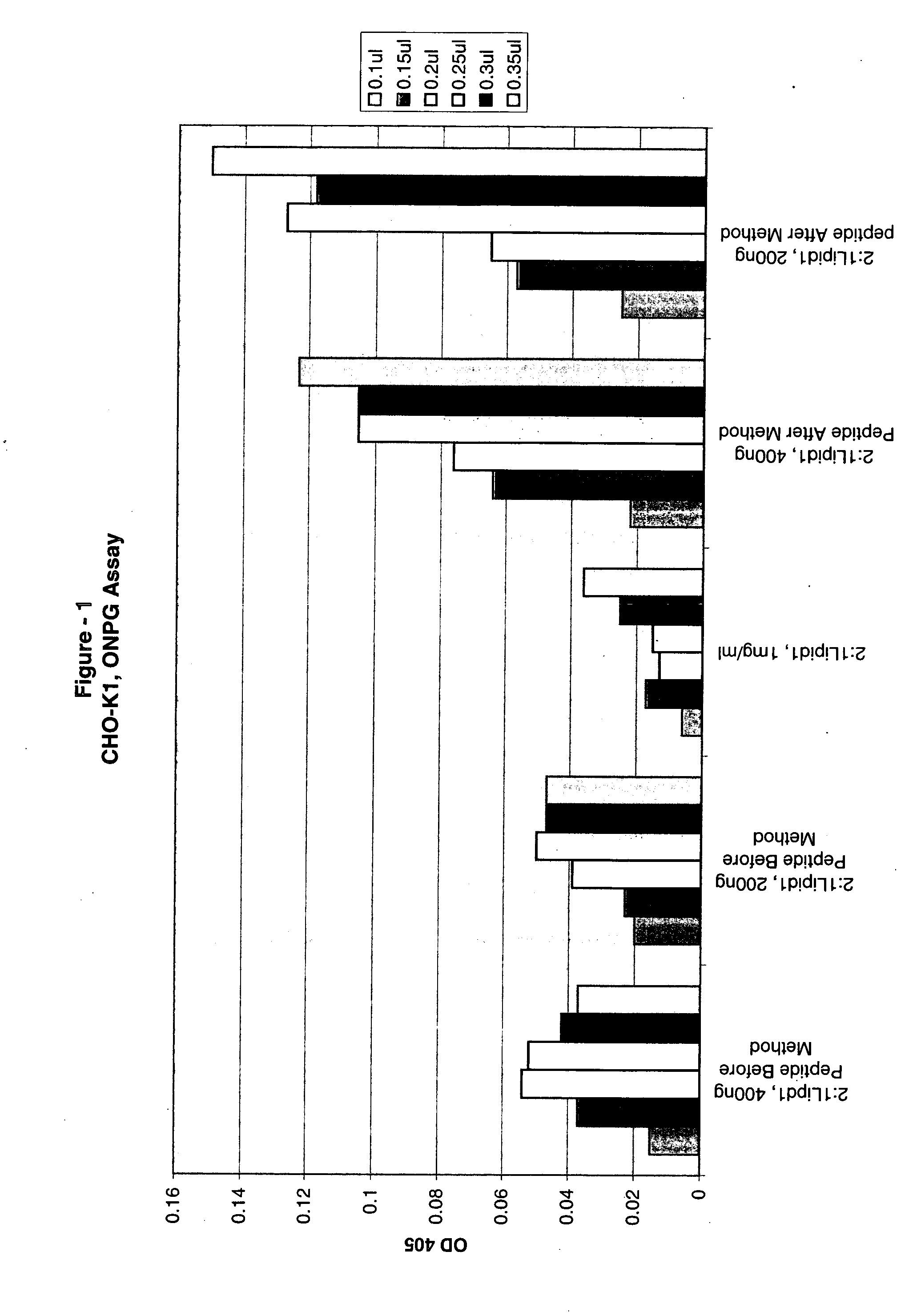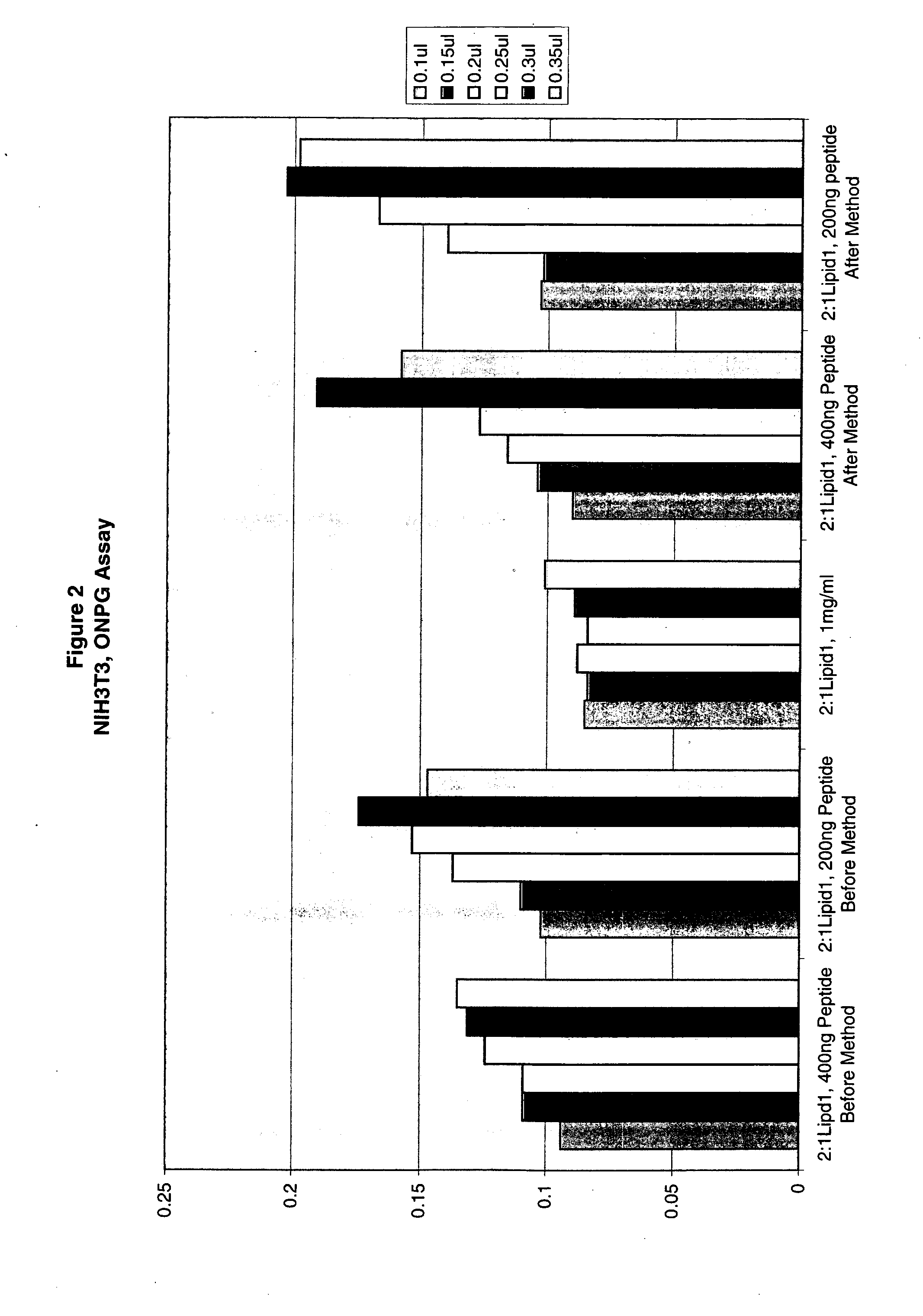Novel reagents for transfection of eukaryotic cells
a technology for eukaryotic cells and reagents, applied in the field of new reagents for eukaryotic cell transfection, can solve the problems of insufficient understanding of the mechanism by which cationic lipids deliver nucleic acids into cells, inability to use universally for all cells, and inability to achieve the effect of improving efficiency
- Summary
- Abstract
- Description
- Claims
- Application Information
AI Technical Summary
Benefits of technology
Problems solved by technology
Method used
Image
Examples
example 1
“After” Transfection Protocol where Peptide is Added to DNA / Lipid Complex
[0201]Transfection of CHO-K1, NIH3T3, A549, Cos-7 and BE(2)C with β-galactosidase reporter plasmid pCMV•SPORT-β-gal was carried out as follows:
[0202]Cells were plated in a 96-well plates with 100 μl of media containing 10% fetal calf serum the day before transfection such that a desired confluency (70%-95%) was achieved. The following day a transfection agent that includes a liposomal composition of the lipid DMTS (Dimyrstyl-tetrahydroxy-spermine) and DOPE (2:1 DMTS:DOPE) and DNA were mixed in Opti-MEM to form DNA / lipid complexes. Complexes were formed by adding various amounts of lipids (0.1 to 0.35 μl) to 100 μl of Opti-MEM. DNA (100 ng) was added to 100 μl Opti-MEM. The DNA and lipid solutions were then mixed to form DNA lipid complexes. The complexes were incubated for at least 15 minutes after which added to the DNA lipid complexes, was 20 μl of various amounts of a peptide having the sequence of a Prototy...
example 2
“Before” Transfection Protocol where Peptide is Mixed with DNA and Added to Lipid to Form Complex
[0204]Transfection of CHO-K1, NIH3T3, A549, Cos-7 and BE(2)C with β-galactosidase reporter plasmid pCMV•SPORT-β-gal was carried out as follows:
[0205]Cells were plated in 96-well plates with 100 μl of media containing 10% fetal calf serum the day before transfection such that a desired confluency (70%-95%) was achieved. The following day a transfection agent that includes a liposomal composition of the lipid DMTS (Dimyrstyl-tetrahydroxy-spermine) and DOPE (2:1 DMTS:DOPE) and DNA / peptide were mixed in Opti-MEM to form DNA / lipid / peptide complexes. The peptide and DNA were mixed for 15 minutes and the mixed with lipid for an addition 15 minutes Complexes were formed by adding various amounts of lipids (0.1 to 0.35 μl) to 100 μl of Opti-MEM. DNA (100 ng) was added to 100 μl Opti-MEM then various amounts of peptide having the sequence of Prototypical Avian reovirus fusogenic peptides provided ...
example 3
Exemplary Transfection Protocol for Cells in Suspension
[0208]Transfection of CHO-S and HEK293 in suspension with β-galactosidase reporter plasmid pCMV•SPORT-β-gal is carried out as described below.
[0209]Prior to transfection the cells are cultivated in suspension in a humidified 37° C. and 8% CO2 on an orbital shaker. Antibiotics are not added to the media as this may cause cell death. In addition clumping can lower transfection efficiency therefore the cells are sufficiently agitated at regular intervals to avoid clumping and anti-clumping agents are not added during culturing and prior to transfection. However, anti-clumping agents are optionally used post-transfection.[0210]A) For routine culturing of HEK293 cells, shake at 135-155 rpm keeping the cell densities between 0.1 and 2×106 cells / mL of culture. A cell density above 2×106 cells / mL will result in a loss of transfection efficiency.[0211]B) For routine culturing of CHO-S cells, shake at 120-135 rpm keeping the cell densitie...
PUM
| Property | Measurement | Unit |
|---|---|---|
| concentration | aaaaa | aaaaa |
| concentration | aaaaa | aaaaa |
| total volume | aaaaa | aaaaa |
Abstract
Description
Claims
Application Information
 Login to View More
Login to View More - R&D
- Intellectual Property
- Life Sciences
- Materials
- Tech Scout
- Unparalleled Data Quality
- Higher Quality Content
- 60% Fewer Hallucinations
Browse by: Latest US Patents, China's latest patents, Technical Efficacy Thesaurus, Application Domain, Technology Topic, Popular Technical Reports.
© 2025 PatSnap. All rights reserved.Legal|Privacy policy|Modern Slavery Act Transparency Statement|Sitemap|About US| Contact US: help@patsnap.com



